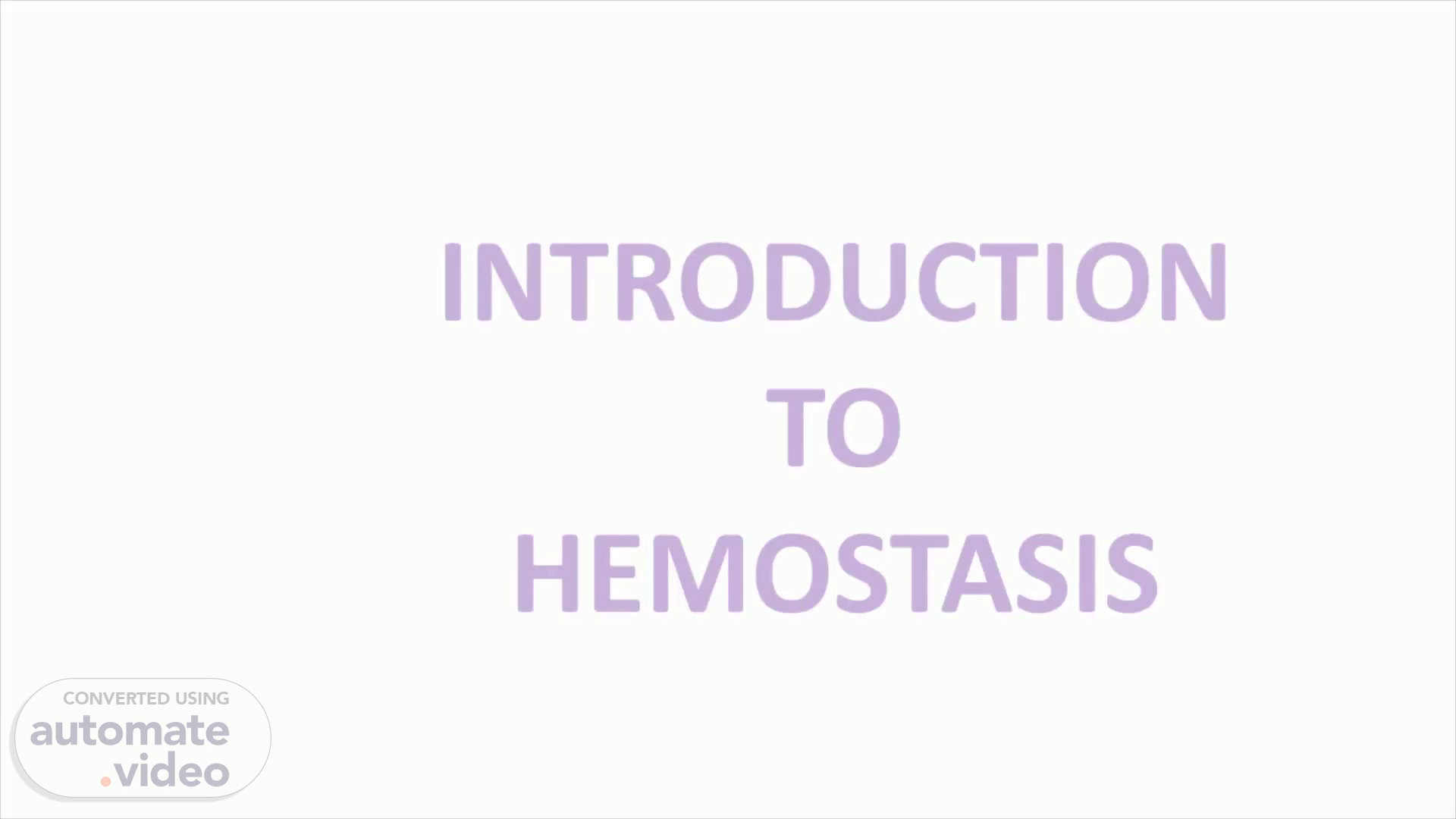
Page 1 (0s)
INTRODUCTION TO HEMOSTASIS.
Page 2 (18s)
Introduction to Hemostasis. THE THREE HEMOSTATIC COMPONENTS: Extravascular Component Vascular Component Intravascular Component.
Page 3 (3m 22s)
Balance of hemostasis: Under normal conditions, the formation and dissolution of thrombin is maintained in a delicate balance..
Page 4 (6m 2s)
Hemostasis is a complex physiologic process that keeps circulating blood in a fluid state and then, when an injury occurs, produces a clot to stop the bleeding, confines the clot to the site of injury, and finally dissolves the clot as the wound heals. When hemostasis systems are out of balance, hemorrhage (bleeding) or thrombosis (pathological clotting) can be life-threatening. The absence of a single plasma procoagulant may destine the individual to lifelong anatomic hemorrhage, chronic inflammation, and transfusion dependence. Conversely, absence of a control protein allows coagulation to proceed unchecked and results in thrombosis, stroke, pulmonary embolism, deep vein thrombosis, and cardiovascular events..
Page 5 (7m 47s)
Hemostasis - interaction of vasoconstriction, platelet adhesion and aggregation, and coagulation enzyme activation to stop bleeding. The key cellular elements of hemostasis are the cells of the vascular intima, extravascular tissue factor (TF)–bearing cells, and platelets. The plasma components are the coagulation and fibrinolytic proteins and their inhibitors. E Primary hemostasis - the role of blood vessels and platelets in response to a vascular injury, or to the commonplace desquamation of dying or damaged endothelial cells. Vasoconstriction and platelet plug formation comprise the initial, rapid, short-lived response to vessel damage. Secondary hemostasis - the activation of a series of coagulation proteins in the plasma, mostly serine proteases, to form a fibrin clot. These proteins circulate as inactive zymogens (proenzymes) that become activated during the process of coagulation and, in turn, form complexes that activate other zymogens to ultimately generate thrombin, an enzyme that converts fibrinogen to a localized fibrin clot. Fibrinolysis - gradual digestion and removal of the fibrin clot as healing occurs..
Page 6 (12m 24s)
Anticoagulant Properties of Intact Vascular Intima Normally, the intact vascular endothelium prevents thrombosis by inhibiting platelet aggregation, preventing coagulation activation and propagation, and enhancing fibrinolysis. Several specific anticoagulant mechanisms prevent intravascular thrombosis. First, ECs are rhomboid and contiguous, providing a smooth inner surface of the blood vessel that prevents harmful turbulence that otherwise may activate platelets and coagulation enzymes. ECs form a physical barrier separating procoagulant proteins and platelets in blood from collagen in the internal elastic lamina that promotes platelet adhesion, and tissue factor in fibroblasts and smooth muscle cells that activates coagulation. Anticoagulant properties of (EC) Endothelial cells?.
Page 7 (14m 6s)
VASCULAR INTIMA IN HEMOSTASIS The vascular intima provides the interface between circulating blood and the body tissues. The innermost lining of blood vessels is a monolayer of metabolically active endothelial cells ( EC ). They display unique structural and functional characteristics, depending on their environment and physiologic requirements, not only in subsets of blood vessels such as arteries versus veins but also in the various tissues and organs of the body. An elastin-rich internal elastic lamina (basement membrane) and its surrounding layer of connective tissues support the ECs..
Page 8 (16m 19s)
Platelet Function. Function Characteristics Adhesion: platelets roll and cling to nonplatelet surfaces Reversible; seals endothelial gaps, some secretion of growth factors, in arterioles VWF is necessary for adhesion Aggregation: platelets adhere to each other Irreversible; platelet plugs form, platelet contents are secreted, requires fibrinogen Secretion: platelets discharge the contents of their granules Irreversible; occurs during aggregation, platelet contents are secreted, essential to coagulation.
Page 9 (19m 56s)
Platelet Granule Contents. Platelet a-Granules * Platelet Dense Granules (Dense Bodies) Large Molecules Small Molecules b- Thromboglobulin Adenosine diphosphate (activates neighboring platelets) Factor V Adenosine triphosphate Factor XI Calcium Protein S Serotonin (vasoconstrictor) Fibrinogen VWF Platelet factor 4 (heparin inhibitor) Platelet-derived growth factor.
Page 10 (21m 20s)
Thank you!.